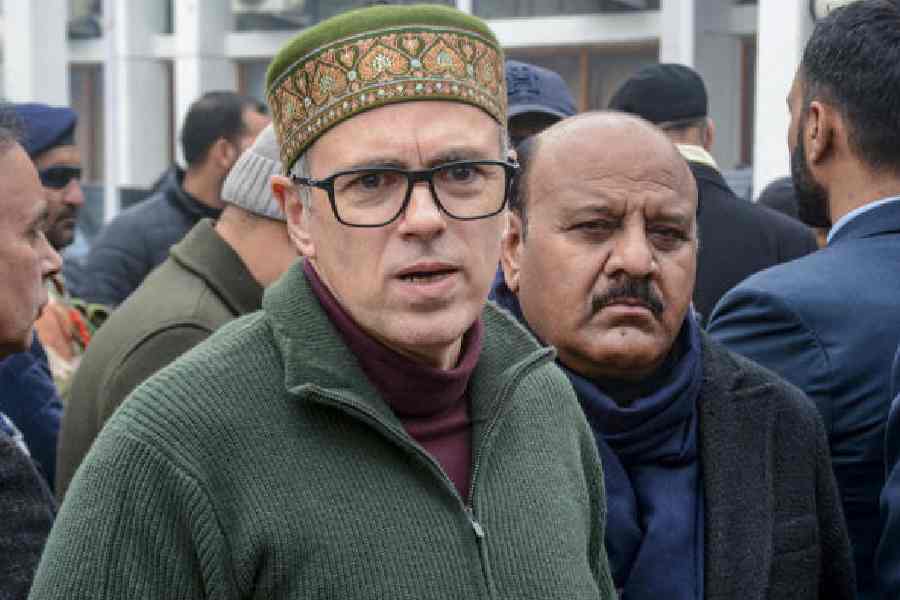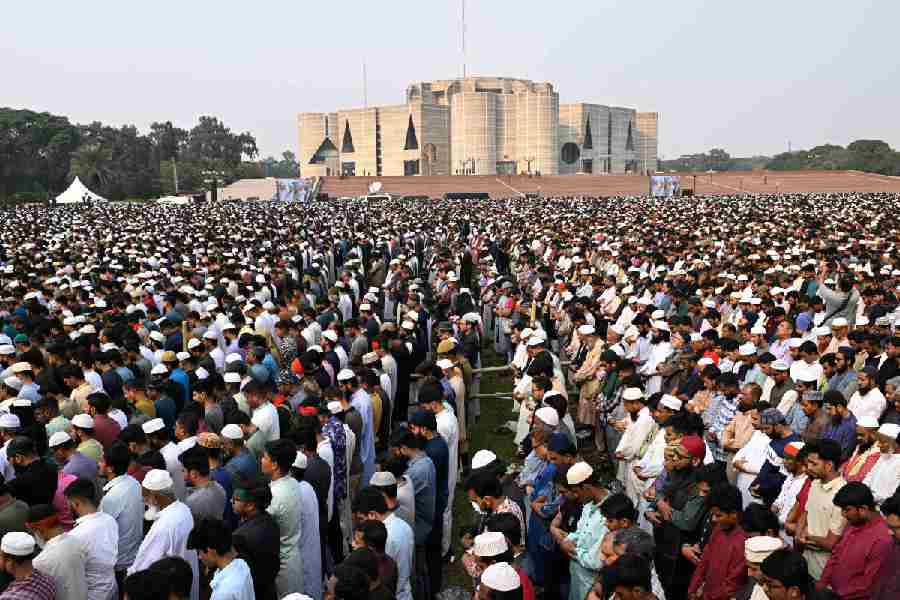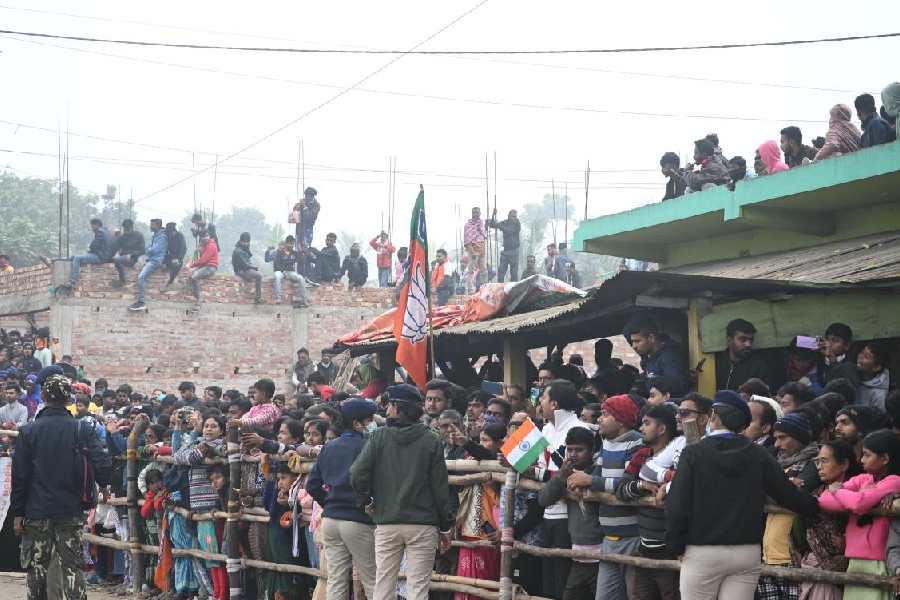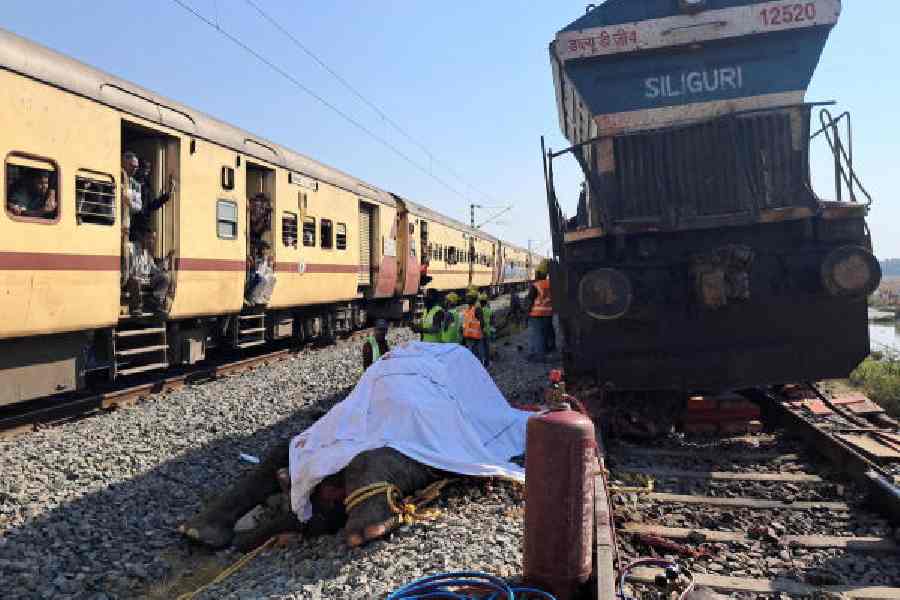 |
| Mumbai-based Abha Narain Lambah is currently working on a management plan for the Ajanta Caves |
 |
For conservation architect Gurmeet Rai, a day at the office might include a trip to Delhi’s Red Fort or alternatively, a drive along the historic Grand Trunk Road. At the Red Fort she’s the mastermind who has drawn up an ambitious blueprint for the restoration of the sprawling grand Mughal legacy. And, for years, she has been involved in identifying and restoring a string of historical monuments along the Grand Trunk Road.
Calcutta-based Manish Chakra-borty admits that his latest large-scale assignment turned out tougher than expected. It has taken him 18 months of painstaking work to restore the 146-year-old St James Church on AJC Bose Road. He has had to go over the building with a fine toothcomb removing foliage from cracks and carefully putting in damp-proof mixtures in different nooks and crannies. He reckons the building now has a new lease of life.
Indians like to boast about the sub-continent’s 5,000 years of glorious history stretching all the way back to the Indus Valley civilisation. But it’s also a country that has done precious little to preserve the thousands of historical monuments scattered all over the country.
 |
| The Raja Rammohun Roy Memorial Museum and S.N. Banerjee’s Barrackpore residence are among Anjan Mitra’s conservation projects |
 |
That may be slowly changing as a band of dedicated conservation architects wield their trowels with almost artistic skill on ancient buildings and monuments around the country. Most often, they’re being called to the rescue by the Central government and state governments.
Says Rai: “Unlike in the past, the demand for conservation architecture is so high nowadays that at times it is difficult to meet it.”
But if conservation has been neglected over the decades there’s a flip side for the architects struggling to keep India’s monuments intact. They have an extraordinary canvas to work on. Take Mumbai-based Abha Narain Lambah who initially exercised her skills mainly on the self-assured Victorian structures of Mumbai, but has now spread her wings all over the country. She’s currently working on a management plan for the Ajanta Caves. She has supervised work on a 15th-century Buddhist temple in Basgo, Ladakh, and even the Chandramauleshwar Temple in Hampi.
 |
| Manish Chakraborty’s work on churches include the landmark St. John’s Church built in 1786; Location courtesy Sovabazar Rajbari |
 |
Says Lambah: “I’ve been fortunate dealing with a range of structures including temples in Hampi, rock-cut architecture at the Ajanta Caves, colonial buildings in stone in Mumbai and terracotta temples of Maluti in Jharkhand.”
Calcutta, not surprisingly, is a city with a heritage crying to be restored and looked after. So, Chakraborty too has had his hands full in recent times. One of his most interesting projects was the conservation of Tagore Hall, the 19th-century bungalow at Ballygunge Circular Road, once occupied by Rabindranath Tagore’s son, Rathindranath, and now owned by the Goodricke Group.
Chakraborty had to, for instance, search out the best quality Burma teak for the flooring at Tagore Hall and ensure that the planks were not totally uniform — to preserve the original look. And he had to carefully reinforce the spiral wooden staircase which was on the verge of collapse and which is now one of the polished talking points of the building.
Besides that, Chakraborty is proud of his efforts to conserve the 19th-century home of scholar and social reformer Ishwarchandra Vidyasagar in north Calcutta and also saving physicist and plant biologist Jagadish Chandra Bose’s home in Darjeeling. He has also worked on several landmark churches like St. John’s Church built in 1786, St. Paul’s Cathedral and Bishop’s Chapel for the Diocese of Calcutta. Says Chakraborty: “Conservation is crucial and urgent because in the ever increasing spree for decontextualised, quick profit-motivated development, historic buildings are vanishing.”
 |
| His restoration of the Bhau Daji Lad Museum (better known as the Victoria & Albert Museum) won Vikas Dilawari an award; Pic by Gajanan Dudhalkar |
Also in Calcutta, conservation architect Anjan Mitra has worked on familiar buildings like the Barrackpore residence of S.N.Banerjee and also two heritage buildings at Central Avenue. Besides that he has restored a 400-year-old temple in Murshidabad and also worked on conserving the Raja Rammohun Roy Memorial Museum on Amherst Street and the Kali Mandir on Cossipore Road.
Mitra is fanatical about using traditional construction techniques and materials. “Compatibility of the intervention is of great importance. In case certain materials are not available any more we try to replace them with material that simulates the original,” he says.
Mumbai too is getting surgical treatment from conservation architects like Lambah and Vikas Dilawari. In fact, Dilawari is currently working on some of the city’s most prominent landmarks like Elphinstone College, the Royal Bombay Yacht Club and even one of the city’s most famous sights: Flora Fountain. He has also restored the Bhau Daji Lad Museum (better known as the Victoria & Albert Museum) and won a major award for his work on it. Also, he restored the Rajabai Tower. “We are also involved in restoring a whole colony of century-old heritage building tenanted by Parsis in Agripada,” says Dilawari.
Of course, it isn’t only grand monuments like the Red Fort that are getting surgical treatment from the conservation architects. Most conservation — as is evident in Calcutta — is taking place on mid-sized buildings that happen to be of historical value.
 |
| Gurmeet Rai has been involved in identifying and restoring a string of historical monuments along the Grand Trunk Road; Pic by Jagan Negi |
Take a look at Coimbatore-based Kamalahasan Ramaswamy who’s spread his wings across Tamil Nadu, Kerala and Pondicherry and has been working on a string of lesser known buildings like the home of the Nagappa Chettiars in Chettinad. He’s been concentrating his efforts in towns like Coimbatore and Pollachi in Tamil Nadu and he’s also working currently on Havelock House, a colonial era building in Ooty, now being converted into a hotel. Besides that he has worked on several French colonial buildings in Pondicherry and also on what are called Franco-Tamil buildings in the Black Town part of the city.
Conservation architects, inevitably, come across the most unusual finds during their work. Rai recalls how during the conservation work of Gobindgarh Fort in Amritsar she discovered that a portion of the site thought to have been Maharaja Ranjit Singh’s treasury had later been used as an ammunition magazine.
And working at the Red Fort has been like putting together the pieces of a jigsaw puzzle. They studied an 1860 plan of the fort and compared it with a modern plan. Says Rai: “This made it possible to understand what the spaces were, especially because 80 per cent of the Red Fort was destroyed during the British period,” says Rai. “You need to understand a building. It tends to speak if you care to listen and recognise what it means to the community and stakeholders,” she adds.
All the architects stress that it’s crucial to keep in mind the key principles of conservation when working on any building. Vikas Dilawari insists that it’s crucial for conservation architects to control their ego and respect the original creation. Therefore, intervention should be minimal and several rules should be followed. Original materials should be used as much as possible. It’s also crucial to document the building before and after the work. “Conservation architects should try to adhere to these internationally accepted conservation principles,” he says.
Similarly, Lambah stresses that it’s important to ensure that the best materials are used. “So whether it is the Burma teak wood or carved lime stucco work — each historic material needs to be carefully preserved with minimal replacement,” she says.
 |
 |
| Kamalahasan Ramaswamy is working on conserving old properties across Tamil Nadu, Kerala and Pondicherry |
Most old and historic buildings were built in terracotta bricks with lime and surkhi (brick dust) mortar as the bonding agent. “Jaggery, molasses, curd, egg yolk, etc were traditionally used as admixtures with lime for the construction of old buildings,” says Chakraborty.
Rai, who has done extensive work in Punjab, had to work with handmade Nanak Shahi bricks (medieval period bricks) which she usually sourced from old buildings in the region. She had put together a large consignment of such bricks when she was renovating the terracing of the 18th century Ramgarhia Bunga at the Sri Harimandir complex in Amritsar. “These bricks are weather resistant,” she says.
But, if there’s one crucial factor that has changed in recent years it is the attitudes of governments both at the Centre and states. Rai points out that in the latest, the Thirteenth Finance Commission (2010-2015), Punjab received a Rs 100 crore budget as opposed to Rs 10 crore which was allocated to it by the Twelfth Finance Commission. Similarly, in Madhya Pradesh budgets have risen steeply — though the infrastructure to execute the conservation is very weak.
In fact, money is not the key factor, says Chakraborty, who insists that restoring a heritage structure is a slow process. “Restoration involves investing in craftsmen and I say generally that if you are investing more than Rs 8 lakh to Rs 12 lakh, depending on the scale of the project, you are not conserving but replacing old original materials with new materials,” he says.
Chakraborty points out that awareness about conservation is rising in leaps and bounds and that many young architects are getting into the field. But India’s a large country with hundreds of thousands of historical monuments and buildings and there’ll be plenty of work for all of them for a long time to come.










